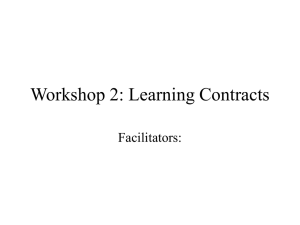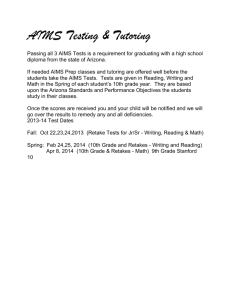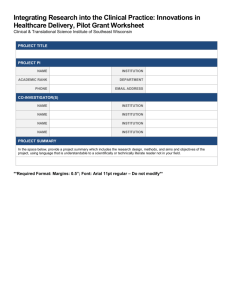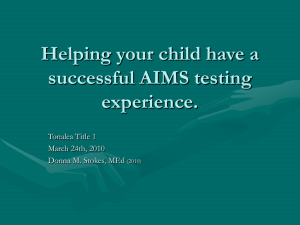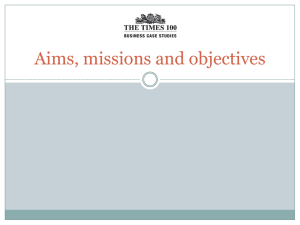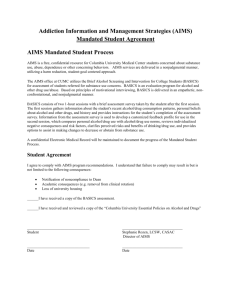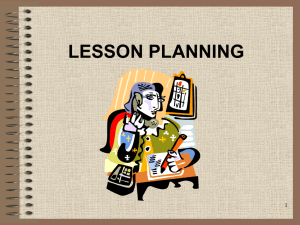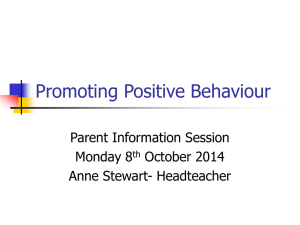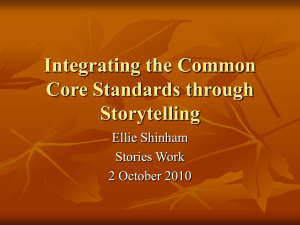Learning outcomes
advertisement
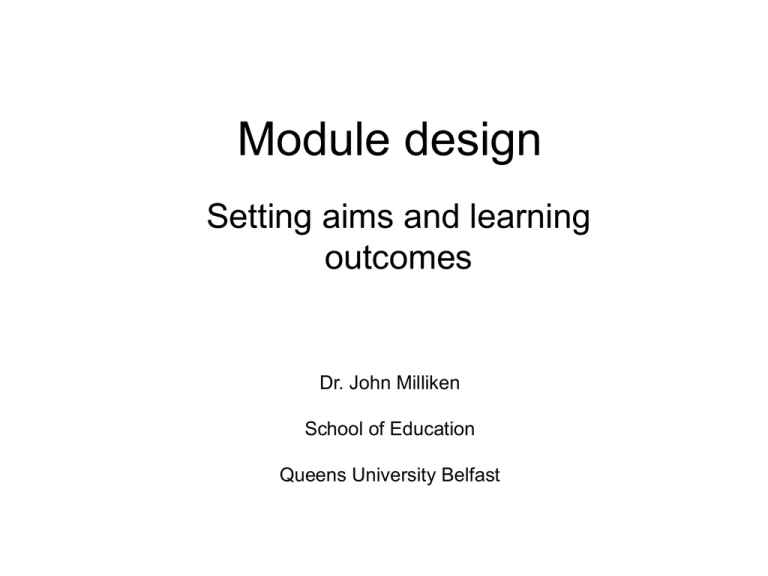
Module design Setting aims and learning outcomes Dr. John Milliken School of Education Queens University Belfast Learning outcomes If you don’t know where you’re going, You’ll probably end up somewhere else. (Campbell 1984) Context of the Workshop • • • • • • • Framework for HE Qualifications Subject benchmark statements Professional Body Requirements Programme specification Level of module Pre- and co-requisites Barred combinations What are learning outcomes? • An outcome is simply a result or consequence of an action or process • A learning outcome is what results from a learning process • Intended learning outcomes are statements that predict what learners will have gained as a result of learning (Higher Education Academy) Outcomes Model Explicit statement of learning intent Enabling processes and resources Feedback loop Assessment criteria for achievement So for today… Aims This session aims to: – Help you to reconsider your course design, and whether you have ‘got the basics right’ in terms of assessment Intended learning outcomes (ILO) By the end of this course you should be able to: – Write explicit learning outcomes – Design a course that is ‘constructively aligned’ Aims and learning outcomes • Aims are written in terms of lecturer intention • Learning outcomes are written in terms of student capability What to consider in designing a module: constructive alignment 1. Who are my students? 2. What are my aims/learning outcomes? 3. What outcomes do I hope students will achieve? 4. What do I want to assess? 5. How do I want to assess my students? 6. What segments of content do I think are essential building blocks for students 7. What teaching and learning strategies do I want to use? 8. In what mode(s) will I deliver the course? Alignment model Figure 1. Aligning learning outcomes, learning and teaching activities and the assessment. Adapted from Biggs(1999) p 27 Learning Outcomes Learning outcomes • Programme learning outcomes • Module learning outcomes • Session learning outcomes Programme Learning Outcomes •Knowledge and understanding •Intellectual skills •Practical skills •Key/transferable skills Distillation matrix Code Year/Se m COMPULSORY MODULES Title K1 ECO127 K2 K3 I1 I2 I3 P1 P2 P3 T1 T2 T3 T4 1/1 Economics Y BMG106 1/1 MKT108 1/1 ACF110 1/2 BMG171 1/2 BMG170 1/2 BMGXXX 2/1 MKTXXX 2/1 Y Y Organisational Studies Introduction to Marketing Introduction to Accounting Information Systems and Quantitative Analysis for Managers Introduction to Human Resource Management Management of Organisations (Lloyd H) Marketing Management (John Milliken) Y ACF321 2/2 BMGXXX 2/2 BMGXXX 3/1 ACFXXX 3/2 Managerial Accounting (Michael Thompson Contemporary Issues in HRM (AMD) Strategic Management (Lloyd Hunter) Financial Management (Ken Dyson) Y Y Y Y Y Y Y Constructive alignment Figure 1. Aligning learning outcomes, learning and teaching activities and the assessment. Adapted from Biggs(1999) p 27 Module Level SOLO taxonomy • Pre structural • Unistructural • Multi structural • Relational • Extended abstract Writing learning outcomes • Aims – – – – – – Know Understand Determine Appreciate Grasp Become familiar • Outcomes – – – – – – – – – – Outline Distinguish between Choose Assemble Identify Solve Apply Describe Analyse Synthesise SOLO verbs • Minimal understanding – sufficient to deal with basic terminology – memorise, identify, recognise. • Descriptive understanding – knowing about several topics – classify, describe, list • Integrative understanding – relating facts together and understanding basis theory – apply to known contexts – integrate, ‘If students are to learn desired outcomes in a reasonably effective manner, then the teacher’s fundamental task is to get students to engage in learning activities that are likely to result in their achieving those outcomes’ (Schuell, 1986) Some examples By the end of the module colleagues should be able to: 1. Plan and structure teaching sessions for effective student learning 2. Apply appropriate teaching strategies and technologies as appropriate 3. Present content in clear language and stimulating ways Writing learning outcomes We recommend that you aim for between four and eight learning outcomes for each of your single modules, and up to twenty-five outcomes for an entire programme. Start programme outcomes with the phrase: ‘A successful learner from this programme will be able to …’ Start module outcomes with the phrase: ‘On successful completion of the module, you will be able to …’ Writing learning outcomes Examples • • • • Knowledge & understanding skills Intellectual skills (Blooms) Practical skills (subject specific) Key/transferable (generic) (Blooms) Linking outcomes to assessment • Assessment tasks should fulfil module outcomes • One-to-one criterion for each outcome • Multi criterion for each outcome • Regular reference to module outcomes Motivating students Constructive planning Learning outcomes Learning activities Assessed coursework assignment Final module assessment task WORKSHOP Using the handout please complete a learning outcome from each category for one of your lectures/modules/courses. •Knowledge & understanding skills •Intellectual skills •Practical skills •Key/transferable Learning outcomes

